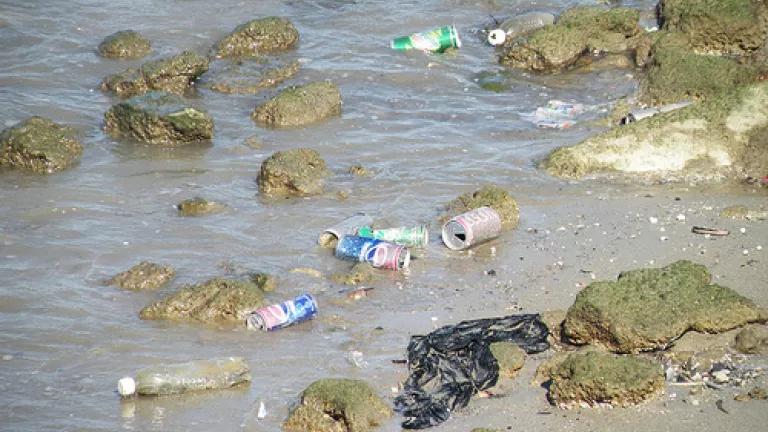
Like anyone who spends time in the water, I’ve had more than a few unpleasant encounters with floating trash. Abandoned dinghies, nets, buoys, mylar balloons, dead birds and fish, and above all, plastic. Around the world, people dump about 20 million tons of plastic into the ocean every year, much of it in the form of flyaway plastic bags. This waste doesn’t get magically swallowed by the ocean--it lingers indefinitely, posing a threat to marine life and to human health.
(Soft Drink Cans and Plastic Bottles Going for a Swim, by Mink, Creative Commons BY-NC-SA 2.0)
Picking up garbage in the ocean is an expensive proposition, so the smart solution is to stop this waste at its source. That’s why California—with its 840-mile coastline and a 13-billion-bag-a-year habit, just became the first state in the nation to ban single-use plastic bags.
As vast and powerful as our ocean seems to be, it is vulnerable. For one thing, plastic in the ocean doesn’t disappear. Those flimsy bags that tear so easily under the weight of a milk carton stay intact for decades in the ocean, where they can hurt marine life as well as human health. Whales and turtles mistake floating bags for squid or jellyfish, and seabirds, like albatross, feed bits of plastic to their chicks—eating plastic can lead to starvation, malnutrition, or internal injuries. Some plastics contain toxic substances that can kill or harm reproduction in fish, shellfish, or any marine life.
The prevalence of plastic in the ocean has scientists concerned not just for marine ecosystems but for human health as well. Plastic doesn’t degrade completely—it’s pretty much around, in some form, for centuries. Plastic debris absorbs and concentrates toxins from seawater. When sea creatures eat plastic, those toxins accumulate in the food chain, putting human health at risk.
Plastic waste hurts city budgets, too. NRDC reported last year that 95 California cities, coastal and inland, spend nearly $500 million a year to clean up litter and keep trash out of waterways. The recycling rate for plastic bags, wraps, and the like is only about 12 percent.
My NRDC colleagues in California have been working with a broad coalition of environmental and community groups, retailers, and Latino leaders to develop smart, thoughtful legislation to reduce the burden of plastic pollution and protect California’s valuable ocean resources. The law Governor Brown signed last week will ban the distribution of single-use plastic bags from groceries and pharmacies starting in July 2015, and liquor stores and convenience stores from July 2016.
Customers who don’t have their own bags will still have the option of buying a compostable plastic bag, a recycled content paper bag, or other reusable bag for 10 cents. The fee will be waived for low-income shoppers who participate in the state food program. What’s more, the law includes an appropriation of $2 million to create and retain jobs by helping manufacturers of single-use plastic bags switch to production of durable, reusable bags.
California is the first state to ban throwaway plastic bags, but this move started in the cities. San Francisco was the first U.S. city to ban the bag back in 2007. Today, more than 150 cities and counties are implementing bans or fees on bags to reduce plastic waste, including Chicago, New York, Austin, Dallas, much of Hawaii, and Washington, D.C. Scaling these changes up to the state level—especially in a big, coastal state like California-- makes a real difference in protecting our oceans. Keeping 13 billion bags out of the water every year is a very good start.
[This post is part of our Wasteland series, featuring people, towns, businesses and industries that are finding innovative ways to cut waste, boost efficiency and save money, time and valuable resources.]
